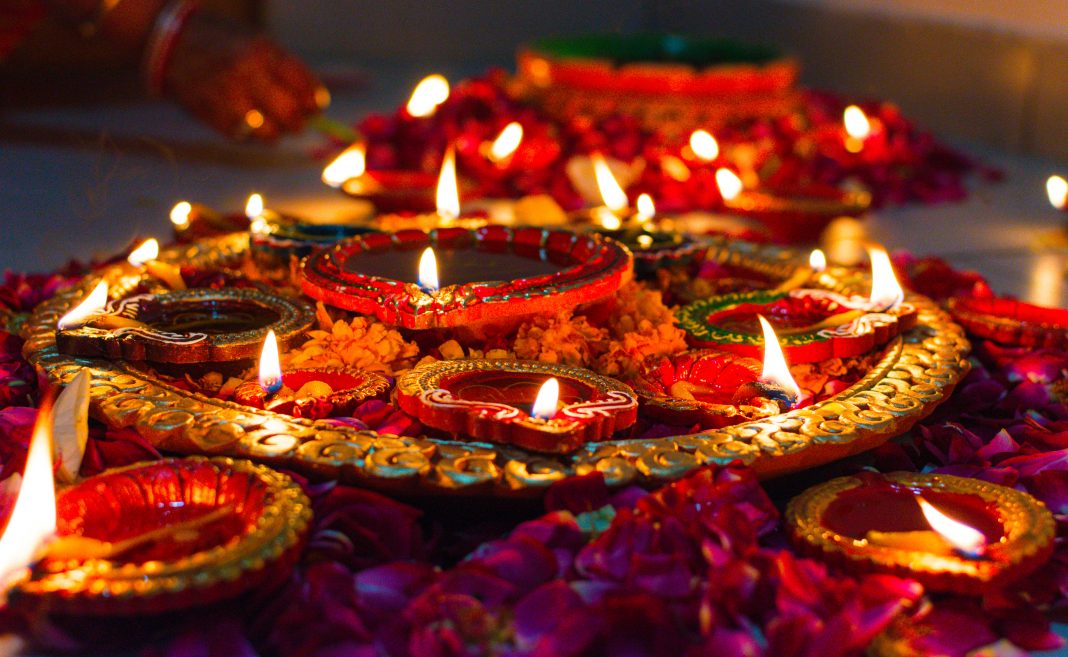Watching the shimmering streams of colourful sparks falling off firecrackers with friends and family is the highlight of Indians celebrating Diwali all over the world. It was inevitable that the celebration of the Festival of Lights this year was going to be a very different, more subdued celebration than previous years. However, what most Indians weren’t expecting was the sudden last-minute ban by the Indian government of the very sound of joy they wanted to hear all year long: the firecrackers.
Diwali is a five-day festival of lights celebrated by over a billion people worldwide. It seeks to celebrate light over darkness, harvest, a new year, and the triumph of good over evil. Traditionally, celebrators visit their relatives to have feasts and exchange sweets and delicacies. Candles and oil lamps are lit all over the streets and houses, and fireworks and festivities are an integral part of this celebration.
In India, over the last few years, there has been a particularly concerning rise in pollution, especially during this time of year due to the many festivals taking place over the last few months of the year. The problem is only exacerbated by non-environmentally friendly industrial and agricultural practices.
The National Green Tribunal, India’s environmental court, announced the ban right before Diwali celebrations, citing the dangers of air pollution. Pollution levels have been at “severe” for over a week and the overall air quality index (AQI), which is on a scale of 0-500, placed New Delhi, the capital, above 400, designated‘Hazardous’ for more than five consecutive days. This data suggested a great risk for the population, particularly for those with cardiovascular and respiratory diseases, as it would damage their health and increase the severity of contracting Covid-19.
No matter how well-intentioned this ban was, it did not have the intended effect. Rather, it caused more damaging consequences. Manufacturers of firecrackers—particularly in the Southern District of Sivakasi, which makes up to 90 per cent of India’s firecracker supply and employs more than 250,000 people—were particularly hard hit by this restriction and demanded compensation from the government.
Research done by the Times of India found that in comparison to other years where similar firecracker restrictions were imposed for brief durations, it had little to no effect in curbing air pollution levels. The ban also wasn’t followed by many people either. There were videos and pictures of people all over the country, and particularly in Delhi, celebrating in large groups with firecrackers spread everywhere. Many residents have commented that banning firecrackers on Diwali has become a joke because no one follows or enforces the ban strictly.
The biggest issue with this ban and other restrictions is that these short-term measures that have proven to be in effective are not going to substantially curb pollution. As some residents have complained, “Why [is there] no action being taken against farmers for burning crop residue? Can two months of pollution be controlled by banning firecrackers?”
The lack of discipline in industrial practices and agricultural burning are two of the biggest contributors to air pollution during this time of year. Farmers in the northern states burn approximately 35 million tons of crop waste from their fields in order to induce a shorter turnaround time for their winter crops. This practice is also banned. However, government data states that this practice accounts for almost 50 per cent of Delhi’s pollution. The consequences of violating the ban have been virtually non-existent because the farmers have no other choice but to burn because the genetically modified crops have short cultivation cycles. The Indian supreme court ordered the chief ministers of these states to stop simply scapegoating the farmers and offer actual financial incentives and alternate solutions in order to tackle this issue.
The lack of effort in providing adequate solutions and limited enforcement on both long term and short term measures encourages a culture of distrust in the government and highlights the lack of follow-through in government leadership. These ineffective policies are only meant to save face while ignoring the real issues that affect pollution and the quality of life in India. If people can’t trust the government to act on issues that concern public health like pollution, then why would they take the Covid-19 pandemic measures seriously?
India currently has the second highest number of Covid-19 infections, with nine million cases as of November 20. Despite public health experts warning about the dangers of large social gatherings, many people flocked the markets to buy gifts and celebrate, leading to a 50 per cent increase in cases over the two days following Diwali. The 2020 Climate Transparency Report just reported India as the only member of the G20 to meet its short-term “fair-share” climate mitigation targets as part of the Paris Agreement. However, the report also established that India is far away from reaching its long-term commitments. The Indian government, for the good of its citizens, must incentivise positive change and enforce its regulations effectively so that the country and the world can see a better future.




a very thought provking article! a fantastic read, i will definitely share!